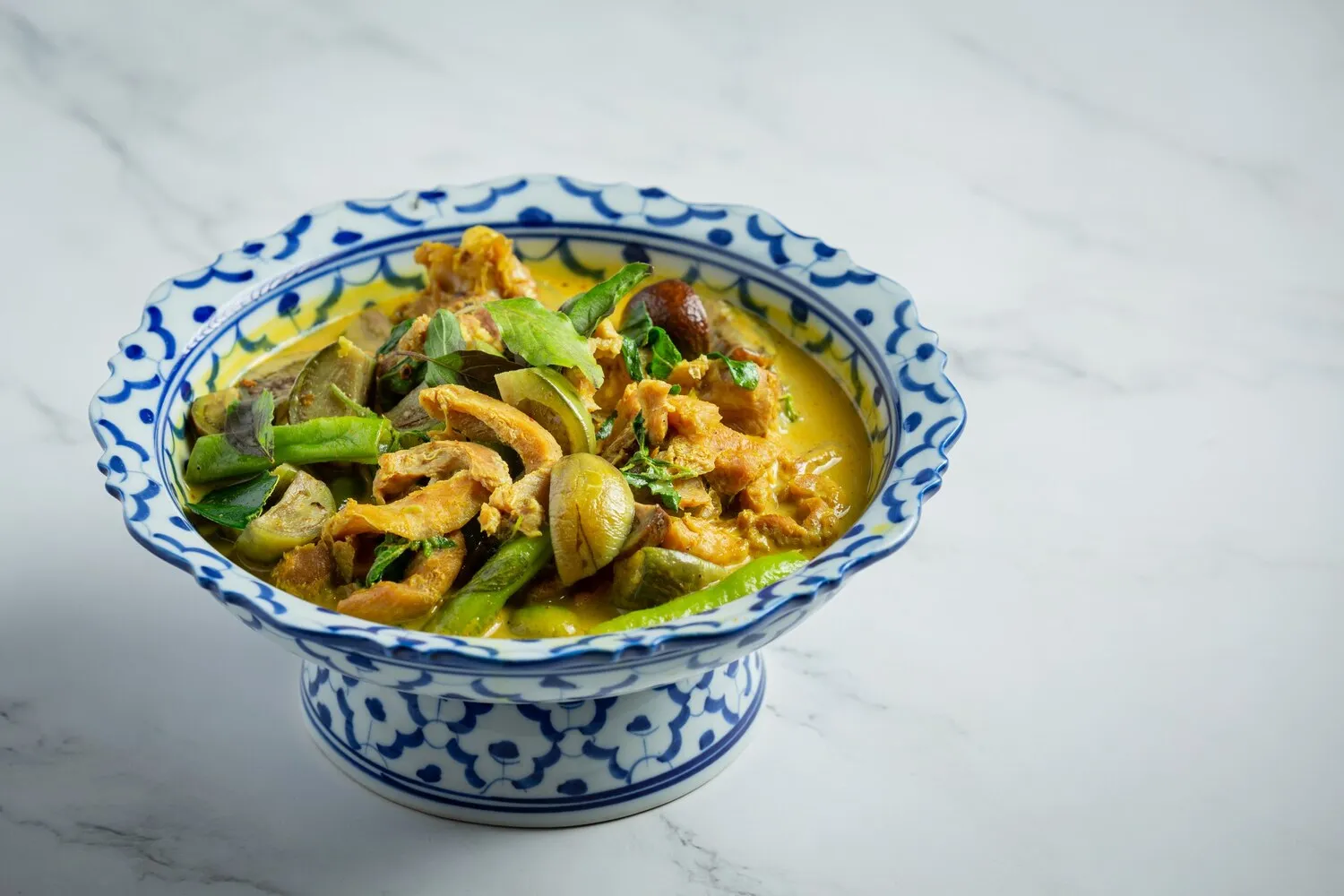
Alleppey Fish Curry
Fish cooked in a tangy and spicy gravy, a signature dish from Alleppey.
Nutrition Facts
* The % Daily Value (DV) tells you how much a nutrient in a serving of food contributes to a daily diet. 2,000 calories a day is used for general nutrition advice.
Alleppey Fish Curry, also known as Alappuzha Fish Curry, is a traditional dish originating from Alleppey (Alappuzha), a coastal town in Kerala, India. Its history is intertwined with the region's rich spice trade and abundant seafood resources. The dish reflects influences from Portuguese and Dutch colonization, which introduced new ingredients and cooking techniques to the local cuisine, blending with existing indigenous culinary practices.
Alleppey Fish Curry holds a significant place in Kerala's culinary heritage and is deeply embedded in its cultural traditions. It is often served during special occasions, family gatherings, and festivals, showcasing the region's culinary expertise and the abundance of its natural resources.
Coastal Cuisine Staple
Being a coastal region, seafood is a staple in Alleppey's cuisine. Alleppey Fish Curry embodies this reliance and appreciation for fresh, locally sourced fish.
Festival Food
This curry frequently features prominently in traditional Kerala feasts (Sadhya) during festivals like Onam and Vishu, representing a symbol of prosperity and abundance.
Family Recipe Heritage
Many families in Alleppey have their own variations of the recipe, passed down through generations, making it a dish with strong familial and regional ties.
Alleppey Fish Curry boasts a harmonious blend of tangy, spicy, and subtly sweet flavors. The dominant tanginess comes from kokum (Malabar tamarind), while the spices contribute a warm, aromatic heat. Coconut milk adds richness and a hint of sweetness, balancing the other elements.
The key flavors are derived from: Kokum (Garcinia indica), imparting a distinct sourness; ginger, garlic, and green chilies, providing a spicy base; turmeric powder, offering earthy notes and color; red chili powder, enhancing the heat; curry leaves, lending a unique aromatic fragrance; coconut milk, creating a creamy and slightly sweet texture; and mustard seeds, adding a nutty undertone when tempered in coconut oil.
Freshness is Key
Use the freshest fish available for the best flavor and texture. Pomfret, kingfish (seer fish), or pearl spot (karimeen) are popular choices.
Kokum Usage
Soak the kokum in warm water for at least 30 minutes before adding it to the curry to release its sourness fully.
Spice Tempering
Properly tempering the mustard seeds and curry leaves in coconut oil at the beginning releases their aroma and infuses the oil with flavor, which enhances the overall taste of the curry.
Coconut Milk Consistency
Using thick coconut milk adds richness and creaminess, while thin coconut milk can be used to adjust the consistency of the gravy.
Explore additional Curry dishes and restaurants
Explore CurryDiscover top dining spots and culinary experiences in Mumbai.
Explore MumbaiLearn more about the food culture, restaurant scene, and culinary heritage of India.
Explore India